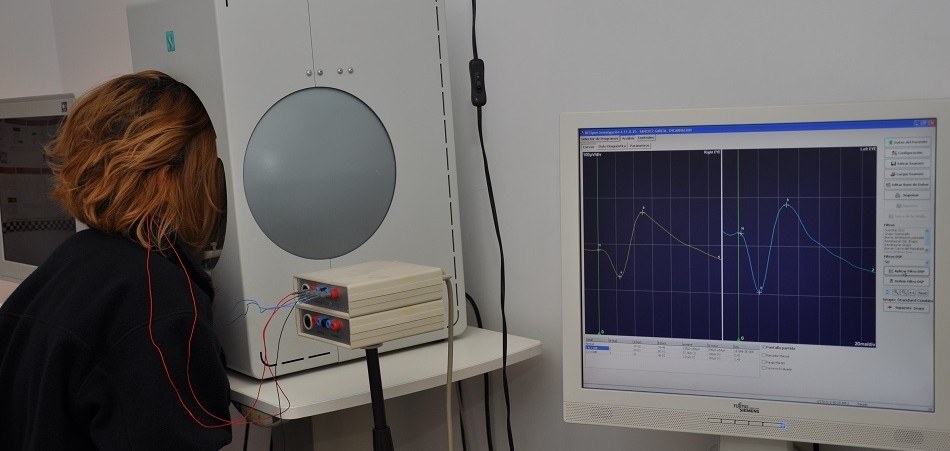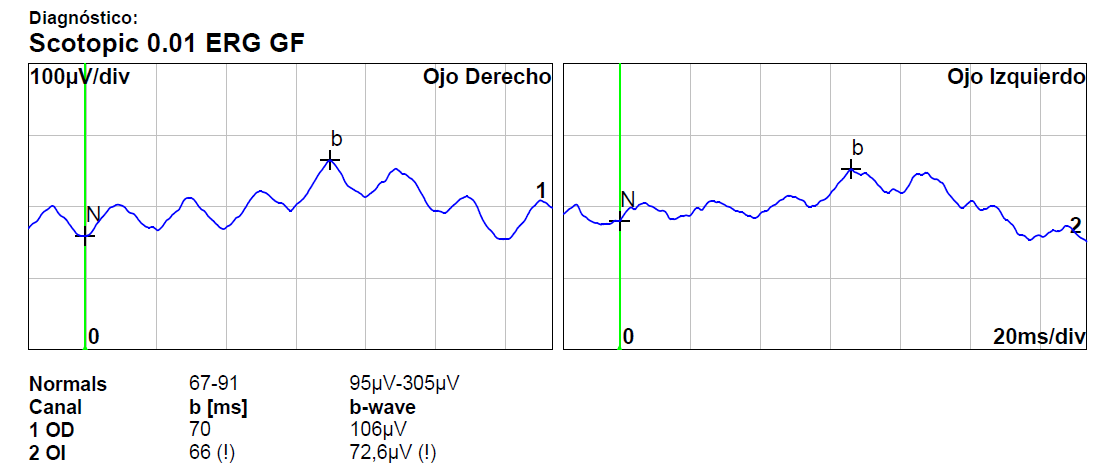
The electroretinogram or electroretinography is an electrophysiological test used to measure the electrical response produced by light-sensitive retinal cells (cones and rods).
This test allows for the early detection and therapeutic management of retinal diseases, and is also considered a useful test for glaucoma monitoring.
This test is used to diagnose inherited degenerative retinal diseases such as pigmentary retinopathy or to monitor the condition of the retina when taking medications (e.g. antimalarials) that can damage the retina. The test is also frequently prescribed for various indications such as retinitis (inflammation of the retina), diabetic retinopathy, retinal detachment or other causes of visual loss.
In addition, before the test is performed, the patient will be given drops to dilate his pupils and other anesthetic drops to avoid discomfort on the surface of the eye due to the use of small electrodes.
It is not recommended to drive after the test, since the drops applied for pupil dilation may cause blurring and visual difficulty for 6-12 hours. After this time these effects disappear completely. If contact lenses are used, it is also recommended not to wear them until these effects disappear.
The electroretinogram is a test monitored by an optometrist that consists of stimulating the retina with flashes of light of different intensities. To perform it, a small electrode is placed on the lower eyelid and in contact with the patient’s eye, which will allow the functionalism of the retina to be determined. The eye is then exposed to luminous stimuli with variable background lighting, intensity and frequency. The electrical nerve impulses in the retina produced in response to the light stimuli are recorded by the electrode and plotted on a graph called a “retinogram”.
The duration of the test is approximately 45 minutes: the patient must spend 20 minutes adapting to the dark and then look inside a dome, where light flashes stimulate the retina.
Once the data has been collected, the ophthalmologist will be in charge of interpreting the results and transmitting them during the next visit.

No, although the placing of the electrode in contact with the ocular conjunctiva may cause a slight irritation in the eye that will disappear shortly after the test and is minimized with the use of anesthetic during the test and by the use of artificial tears at the end of the test.
Yes, it is better to be accompanied by another person, since after the test you will have blurred vision due to the temporary effect of the pupil dilation drops.
It is not necessary to fast for the test.
The data are obtained at the same time the test is performed. If a report is required by an ophthalmologist, the test report will be sent to you within a few days.
The optometrist is the one in charge of performing the test and has the knowledge to confirm its correct performance. It is up to the ophthalmologist to interpret and report the results obtained, who will do so in the clinical context after a complete anamnesis and examination of the patient.
Normal values in this test are not exact figures. They cannot be determined by interpreting the test alone. The ophthalmologist interprets them in the context of the patient’s symptoms and ophthalmologic examination.
No, after the test it is not recommended to drive, since the effect of the dilating drops (some blurring, glare) will not yet have disappeared. However, the patient can take a shower after the electroretinogram.
Contact us or request an appointment with our medical team.